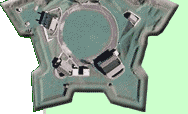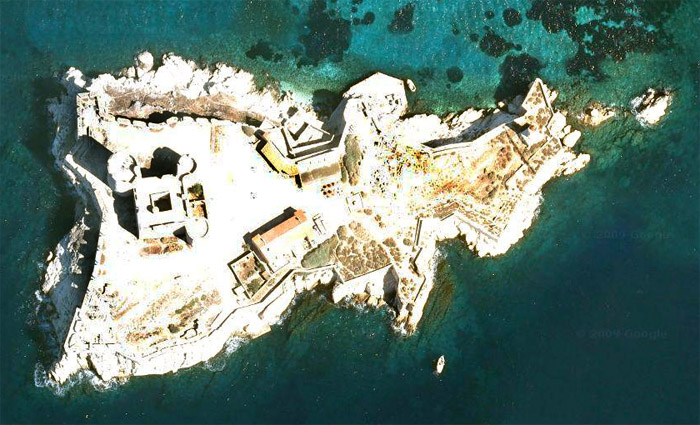
 |
 |
Chateau d'if Marseilles, France |
 |
 |
 |
 |
 |
||
 |
Marseille is the oldest city in France, dating back to 600BC, when Greek sailors founded it as a trading port. Threatened by an alliance of Etruscans, Celts and Carthaginians, the Greeks allied themselves with the Roman Empire for protection, and the city then known as Massaila became an important, thriving Roman commercial entryway into Gaul. With the fall of the Roman Empire in the 5th century, Marseille fell into the unwashed hands of the Visigoths, but was thankfully ungothified by Frankish kings by the middle of the 6th century. As a busy port, the city was one of the first areas of France to experience the bubonic plague, from which it suffered from 1348 to 1361, losing around 15,000 of its population of 25,000. Even though it probably smelled really bad with all those dead people everywhere, Marseille was incorporated into France in 1482. In the early 1500's, French King Francis I (1494-1547) went to Marseilles to check out a rhinosceros that Portuguese King Manuel I (1469-1521) had intended as a gift for Pope Leo X (1475-1521), but that had been shipwrecked on the Ile d'if, which sits about a mile off the coast of Marseille (rhinosceroses make lousy navigators). History fails to report how Francis felt about the rhinosceros, but he was obviously impressed with the Ile d'if, which he chose as the perfect spot for a fortification to defend Marseilles from seaborne attack. The chateau was built from 1524-1531, to the great consternation of Marseilles. When the city had been incorporated with France it had retained the right to provide for its own defense, and saw the Chateau d'if as an unwelcome imposition of royal authority. Indeed, the Chateau did little to prevent the forces of the Holy Roman Empire from besieging Marseilles in 1531...although the Ile d'if itself wasn't attacked, which surely made the residents of Marseilles feel better. It may have been a good thing indeed that the chateau wasn't attacked, as when Vauban visited in 1701 he ripped the fort a new one: "The fortifications look like the rock, they are fully rendered, but very roughly and carelessly, with many imperfections. The whole having been very badly built and with little care... All the buildings, very crudely done, are ill made." As anyone who spends any time @ starforts.com knows, Vauban's word is law, as he is undoubtedly the Eric Clapton (1945- ) of starforts. Crumbly or not, the Chateau d'if's main claim to fame was as a prison. Incarceration was strictly segregated by class: Those of the upper classes (such as a gentleman named de Niozelles who spent six years at the Chateau d'if for failing to remove his hat in the presence of King Louis XIV (1638-1715)) spent their imprisonment in relative comfort in breezy private cells in the chateau's upper levels (and paid dearly for the honor), while the unwashed masses were dumped into the airless windowless lightless stinking pit of doom. This latter experience was made famous by Alexandre Dumas (1802-1870) in his book The Count of Monte Cristo, published in 1844. In the book, the protaginist describes the chateau thus: "Blacker than the sea, blacker than the sky, rose like a phantom the giant of granite, whose projecting crags seemed like arms extended to seize their prey." The character spends five years imprisoned in the Chateau d'if before effecting an escape, which is believed never to have happened: Like Stalag 13, there was no escape from the Chateau d'if. Many of the prisoners who were relegated to its lower levels went insane and/or died, which seemed to be just fine with the prison authorities. American author Mark Twain (1835-1910) visited the Chateau d'if under more pleasant circumstances in July of 1867, and said later in his book The Innocents Abroad that he was shown the fabled Iron Mask, a device that did unpleasant things to prisoners who were forced to wear it. The chateau was demilitarized and opened to the public in 1890, since which time it has been a popular tourist destination. The chateau was used as a location in the 1971 movie The French Connection, but for film versions of The Count of Monte Cristo the chateau didn't look enough like a chateau, so other locations were used. Today, about 12 Euros will get you onto the Ile d'if, where you can scamper gleefully amongst the hundreds of thousands of restless, unhappy spirits that doubtless inhabit the island...and one very old rhinosceros. |
 |
 |
||
|
|
|||||||
Info Source 1
Info Source 2
Info Source 3
Info Source 4 Info Source 5 Info Source 6 Info Source 7 Info Source 8 Info Source 9 Thanks to Google Maps for the image! ©2010 starforts.com |
 |